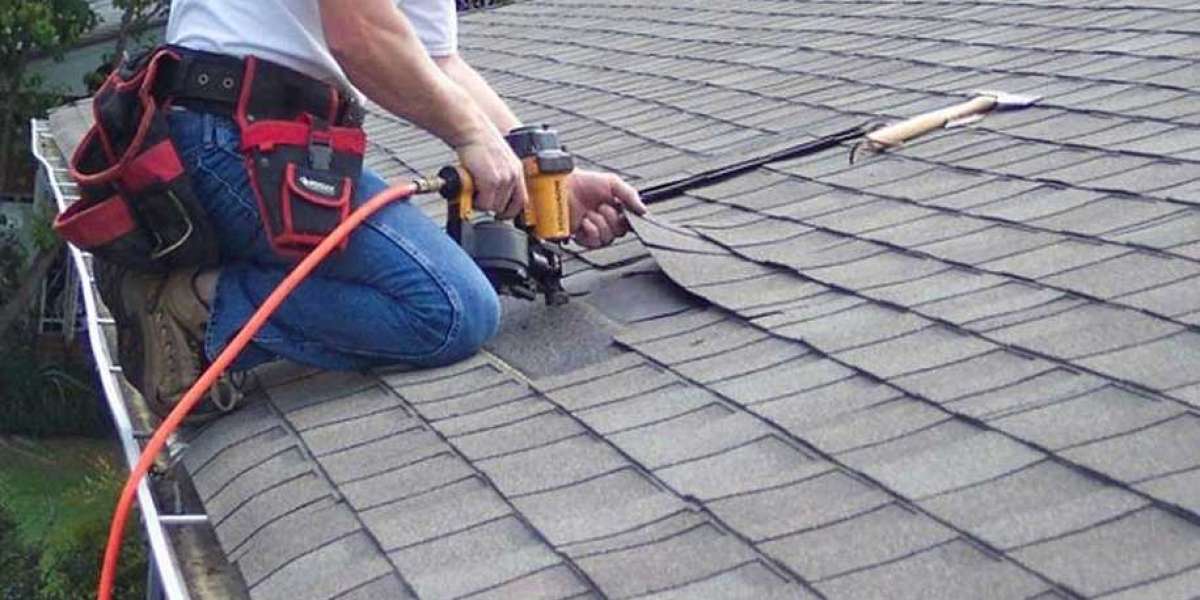It often starts subtly. A faint drip, drip, drip into a bucket in the attic. A mysterious dark water stain spreading across your ceiling after a heavy snow melt. Or, more dramatically, water pouring through a light fixture during a sudden summer hailstorm. However it begins, a roof leak is a homeowner's nightmare. In that moment, panic can set in. The immediate damage is bad enough, but the potential for long-term structural rot, ruined insulation, and hazardous mold growth is the real, looming threat.
Your home is your sanctuary, and a compromised roof shatters that feeling of security. The unique weather in Highlands Ranch—from heavy, wet spring snows to intense afternoon thunderstorms that can bring hail—puts constant strain on your roofing system. When a breach occurs, time is of the essence. Knowing the right steps to take can mean the difference between a manageable repair and a catastrophic, costly renovation. This is where understanding the process of emergency roof sealing becomes critical. It's the crucial first line of defense, a temporary but vital measure to stabilize the situation and protect your home until permanent repairs can be made.
Your First Response: Immediate Actions to Minimize Damage
Before you even think about climbing onto the roof, your priority is to manage the situation safely inside your home. A calm, methodical approach will prevent further damage and keep your family safe.
Contain the Interior Damage
- Protect Your Belongings: Move furniture, electronics, rugs, and any other valuables away from the leak. If you can't move large furniture, cover it with plastic tarps or sheets.
- Mitigate Water Flow: Place buckets, trash cans, or any large containers directly under the leak to catch water. For a widespread drip, a large tarp spread over the area and channeled into a bucket can help protect flooring.
- Relieve Water Pressure: If you see a bulging bubble of water in your ceiling (a sure sign of trapped water), this is a potential collapse hazard. Carefully puncture the center of the bubble with a screwdriver. Place a bucket underneath immediately. This controlled release prevents the entire saturated section from crashing down unexpectedly.
- Document the Damage: Use your smartphone to take clear photos and videos of the leak, the water damage, and any affected personal property. This documentation will be invaluable for your insurance claim later.
Safety First: What NOT to Do
- Do Not Touch Electricals: Avoid any electrical outlets, switches, or fixtures near the leak. Water is a conductor, and electrocution is a real danger. If water is near your electrical system, turn off the power to that section of the house at the breaker box if it is safe to do so.
- Do Not Climb Onto a Wet Roof: A wet roof is incredibly slippery. Combined with the steep pitch of many Highlands Ranch homes, this is a recipe for a serious fall. Furthermore, walking on a damaged roof can worsen the problem. Leave the exterior inspection to the professionals.
The Professional Solution: When and How to Call for Help
Once the immediate interior situation is stabilized, your next step is to contact a professional roofer who offers emergency services. A quick, temporary seal from a pro can prevent a minor leak from becoming a major disaster during the hours or days before a full repair can be scheduled.
What to Expect from a Professional Emergency Service
When you call for emergency roof sealing Highlands Ranch CO, a reputable company will first ask you key questions about the leak to understand the severity. They will then dispatch a crew whose primary goal is to perform a temporary mitigation.
This process typically involves:
- A Safety-First Assessment: The crew will first assess the situation from the ground and then, if safe, use a ladder to get a closer look. They are trained to identify hazards and work securely.
- Locating the Source: This is often the trickiest part. The spot where water is entering your attic is rarely directly above the stain on your ceiling. Water can travel along rafters, sheathing, and insulation before it finally drips down. Experienced roofers know how to trace the path back to the likely entry point.
- Applying the Temporary Seal: Once the source is identified, the crew will apply a temporary waterproof sealant. This isn't a permanent fix. For a leak around a vent pipe, they might apply a specialized pipe boot sealant. For a tear in the shingles from a fallen branch, they might use a high-grade, waterproof roofing tape or a tarp secured over the affected area. The goal is simple: stop the active leaking.
How to Choose a Reputable Emergency Roofer
In a panic, it's tempting to call the first number you find. However, taking a few extra minutes to vet a company can save you from scams or shoddy work.
- Look for Local Established: Choose a company with a physical address in or near Douglas County. They will be more familiar with the common roofing issues in our area.
- Check for Licensing Insurance: This is non-negotiable. Any roofer working on your home must be fully licensed and insured to protect you from liability.
- Read Recent Reviews: Check their Google My Business profile and other review sites. Pay attention to how they handle emergency calls and their communication with customers.
- Get a Clear, Written Plan: The company should clearly explain their temporary mitigation plan and provide a written statement of work for the emergency service. Be wary of anyone who pressures you to sign a contract for a full roof replacement on the spot during an emergency.
From Temporary Fix to Permanent Repair
Emergency sealing is a critical band-aid, not a cure. The next, essential step is to schedule a thorough inspection and permanent repair.
The Follow-Up Inspection
Once the weather has cleared and the immediate crisis is over, your roofer should conduct a comprehensive inspection of your entire roofing system. They will look for the root cause of the leak, which could be:
- Damaged or Missing Shingles: Often caused by high winds or hail.
- Failed Flashing: The metal strips around chimneys, vents, and skylights can crack or corrode over time.
- Clogged Gutters: When gutters back up, water can seep under the roof edge and into the fascia and soffits.
- Aged Sealant: The caulking or tar around roof penetrations can dry out and fail.
The Path to a Permanent Solution
Based on the inspection, the roofer will provide a detailed quote for the necessary repairs. This could range from replacing a small section of shingles and flashing to, in severe cases, a full roof replacement. They will also provide a detailed report with photos, which you can submit to your homeowner's insurance company to begin the claims process.
A leaky roof is a stressful event, but it doesn't have to be a catastrophic one. By knowing how to respond calmly and effectively inside your home, and by partnering with a trusted professional for a swift, temporary seal, you can protect your biggest investment from further harm. This measured, informed approach gives you the breathing room needed to arrange for a quality, permanent repair that will restore the safety and integrity of your home for years to come. This peace of mind is the ultimate goal of professional emergency roof sealing Highlands Ranch CO.







